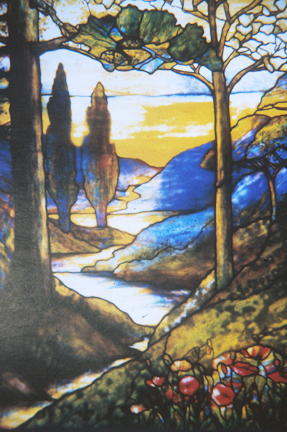An outgrowth of the Arts and Crafts Movement at the turn of the century
in Europe was what came to be called 'Art Nouveau.' Literally 'new art'
it was also a reaction against mass-produced factory products prevalent
in the Victorian age. The term derives from 'Maison de Art Nouveau,' a gallery
opened in Paris in 1895 by Seigfreid Bing, which showed art pottery in this
new style. Instead of using Neoclassic motifs, such as those popularized
by Wedgwood, art nouveau artists and designers turned to the natural world
for inspiration. The style was characterized by sinuous vines and tendrils,
billowing hair, rippling water and fabric, meandering, curvilinear ornaments,
and an asymmetrical placement of design motifs. William Morris and William
de Morgan had of course used many of these design elements in their work
as well. Louis Comfort Tiffany (1848-1933), son of Charles Tiffany, owner
of Tiffany and Co. in New York, was originally trained as a painter and
glassmaker. He was interested in medieval stained glass and traveled extensively
in Europe to study panels in churches. He would return to design and produce
work clearly influenced by both historical stained glass as interpreted
in an art nouveau style. The writings of William Morris were of interest
to Tiffany as well. He experimented with various types of glass and developed
an iridescent satin finish glass he called 'Favrile' glass, (favrile, from
the Old English term for handmade), a trademark he registered in 1894. He
also designed a line of porcelain vases based on abstracted plants and flowers.

'Scenic Leaded Glass Window,' Tiffany Studios, Favrile Glass, 1905


